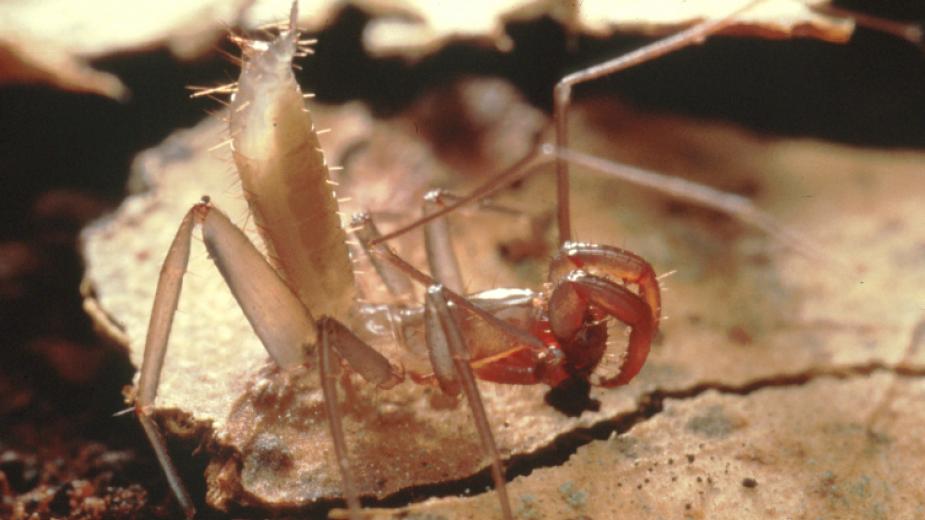Schizomids of the World has been designed to provide some taxonomic information on schizomids and a comprehensive list of the scientific literature.

What are Schizomids?
Schizomids are small arachnids with robust pediipalps, a pair of two-segmented chelicerae, four pairs of legs, of which the first pair are elongated and whip-like, and an elongate abdomen with a short terminal flagellum.
They are considered to be most similar to whip scorpions (Uropygi) and whip spiders (Amblypygi) as all three orders share numerous features in common, such as the antennae-like first pair of legs.
Schizomids occur in most tropical and sub-tropical regions of the world.Most occur in leaf litter or soil, with others found in subterranean habitats.
Phylogeny
The phylogeny of schizomids was examined by Reddell and Cokendolpher (1992). The analysis concentrated on the family Protoschizomidae.
Fossil Fauna
Schizomid fossils have been found in North American Pliocene and Chinese Oligocene deposits. Two of these Tertiary taxa, Calcoschizomus and Onychothelyphonus, are attributable to the Recent family Hubbardiidae, but Calcitro is placed in a separate family, Calcitronidae.
This website contains published data up to the end of 2011.
Important references
- Harvey, M.S. (2003). Catalogue of the smaller arachnid orders of the world: Amblypygi, Uropygi, Schizomida, Palpigradi, Ricinulei and Solifugae. CSIRO Publishing: Melbourne.
- Reddell, J.R. and Cokendolpher, J.C. (1995) Catalogue, bibliography, and generic revision of the order Schizomida (Arachnida). Texas Memorial Museum, Speleological Monographs 4: 1-170.


